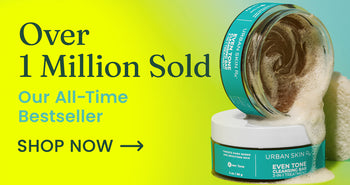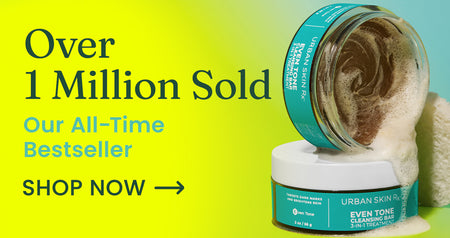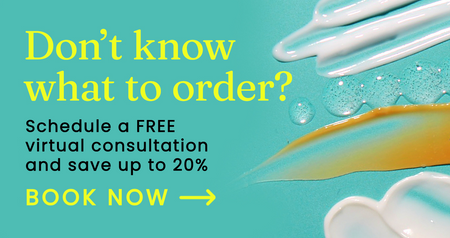How To Use Retinol To Improve Acne

We all hope to leave behind many things when we bid our teen years farewell and move on to adulthood. Cafeteria food, for one — not to mention gym class, petty gossip and the need to wake up before it’s even light outside.
Unfortunately, even the worst things sometimes make a reappearance. And we’re not talking about the toxic exes you accidentally run into while you’re home over the holidays — we’re walking about acne.
While acne most commonly affects people in their teen years, it’s hard to avoid the occasional breakout no matter what your age, especially if you’re prone to it in general. You may have a tried-and-true routine you patented when prepping for high school dances, but as you get older, your skin changes, much like you do, too.
If your acne-fighting routine isn’t cutting it anymore, or you’re new to the wonderful (cough) world of acne — or even if you’re just looking to try out something new — Retinoids can actually be an excellent addition to your skincare routine for getting your skin back on track.
What Is a Retinol?
Retinols and Retinoids are Vitamin A-based solutions that encourage the body to produce more collagen and elastin. They’re a really common ingredient in over-the-counter creams and serums targeted at reducing visible signs of aging. While Retinols and Retinoids are similar, Retinoids are much stronger than Retinols, and thus are only available through prescription.
By generating more collagen and elastin, your skin gets a serious refresh. They may reduce the appearance of wrinkles, fine lines, acne scars, skin texture and can help remove dead skin cells. They can even help get oily skin under control.
While there are many fragrance-free Retinol products out there, not all are made the same. Some topical Retinoids may work for some, while prescription Retinoids may work for others. Since Retinoids are a form of vitamin A (or derivative), the concentration and formula will vary upon the product.
Retinol is a medium-strength Retinoid. It’s much stronger than Retinoid Esters but weaker than Tretinoin or Isotretinoin.
However, Retinoids work very similarly to Retinols, so if you’ve spoken to your dermatologist and they’ve recommended a Retinoid to treat your acne and you think you’d be better off with a Retinol — don’t worry whatsoever. They’re practically just different strengths of the same thing.
How Can Retinoids Help Your Acne?
You might be wondering what Retinoids do for acne, exactly, since they’re most often marketed as an ally to your anti-aging efforts. Because Retinol helps regulate the rate at which your skin refreshes your skin cells, it helps to clear your acne. If you’ve been treating your acne with chemical exfoliants or Alpha Hydroxy Acids like Salicylic Acid or Glycolic Acid, you’ve just been treating the top layer of skin.
This can be helpful for acne, of course. But sometimes, you need something that gets a bit deeper; Retinoids are a great choice.
This doesn’t just keep your skin fresh and tight — it also helps to clear your pores and keep them open and receptive, so if you use any other topical acne medications, they’ll be more effective. And that’s a huge bonus.
Retinols are also helpful for regulating oil production. So if you’re worried that your acne is due to an oily complexion, Retinols might help you get that under control, too.
How Do You Use Retinols?
There are several different ways to work Retinols into your usual skincare routine. It’s first important to note that depending on how sensitive your skin is, it can take a little while to adjust to regular use of Retinol. Because of this, you should start slowly — use your chosen Retinol treatment a couple of times a week to start, and gradually increase your usage as long as your skin tolerates it.
You’ll also want to be sure to follow up on Retinol usage with a nice, rich moisturizer — this is why it’s often recommended that you use your Retinol treatment before bed. That way, you can layer on a thick, luxurious moisturizer like our Mega Moisture Illuminating Night Cream to keep your skin from drying out with regular Retinol usage. But what kind of Retinol should you use? It really depends on your preference and what fits best into your current routine.
Use a Spot Treatment
Anyone who struggles with acne breakouts should be well familiar with spot treatments. They’re usually jam-packed with AHAs and other skin resurfacing ingredients. But our Clear Complexion Acne Serum and Spot Treatment actually includes Retinol, too! If you have sensitive skin and are worried about how your face will tolerate something known to be drying, limiting it to a spot treatment where you can apply it only to the areas that need the most love can be life-saving.
Use a Retinol Serum
Retinol serums are one of the most common ways of working Retinol into your routine. If you already have a bedtime routine that includes washing your face and applying a night cream — and if you don’t, you should! — it’s just about adding one more crucial step.
You’re already cleaning away the grime of the day and giving your skin a much-needed hit of moisture while you sleep — why not give it an extra boost? Applying some skincare products like Retinol Rapid Repair and Dark Spot Treatment to your face after you’ve washed it for the evening can be exactly what you need to break up your breakout.
Afterward, you’ll still want to follow with night cream or heavy moisturizer to minimize the drying effects of Retinol and be sure you’re giving yourself everything you need to hashtag wake up like this.
Use a Powerful Retinol Treatment
Rather than getting your dose of retinol from a daily serum or cream, you could use a weekly (or slightly more, depending on your skin’s tolerance) Retinol treatment to give your skin a blast of the good stuff. This is a great choice if you find regular Retinol use drying. It’s also a good option if you’re just not very good at maintaining a routine — no judgment!
Our Dermapeel Smooth and Glow Treatment 2 Step System is a comprehensive way to resurface and reset your skin — which is ideal if your skin is looking rougher than usual.
Can You Keep Using Retinol After Your Breakout?
If Retinol has managed to clear away your break out and left you with glowing, even skin, you might be wondering if it’s time to quit. After all, traditional acne treatments are usually only used while you’re fighting off pimples and blackheads — not after.
But Retinol isn’t a traditional acne treatment! Because it has all kinds of other benefits — youthful, glowing skin for one — and because your skin will adjust to it over time, you can continue using Retinol even once your last breakout is a distant memory.
Be mindful that while Retinoids may be helpful for breakouts, dryness, irritation and sensitivity to sunlight can be side effects from usage.
Retinols might clear up your acne much faster, but in general, it takes several months to a year of consistent usage to see a noticeable change in things like fine lines and wrinkles. So if you want the all-around glow, once you work your Retinol into your beauty lineup, you’re not going to want to bench it again.


